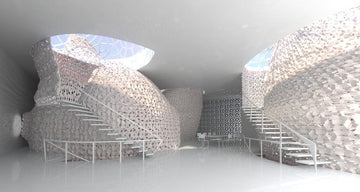Customized Parts and Personalization:
a. Tailored Vehicle Components: 3D printing allows automotive manufacturers to create customized parts for vehicles, accommodating the specific needs and preferences of customers. This includes interior trim, dashboard components, and even personalized exterior elements.b. Lightweighting and Optimization: 3D printing enables the production of intricate geometries and lightweight structures, optimizing parts for improved performance and fuel efficiency. By reducing weight, vehicles can achieve better mileage and reduced emissions.
c. Electric Vehicle Components: 3D printing is particularly advantageous in the production of parts for electric vehicles (EVs). Custom battery enclosures and housings can be designed to fit the unique requirements of each EV model.
Rapid Prototyping and Iterative Design:
a. Accelerated Design Cycles: Automotive companies can quickly iterate and refine designs using 3D printing. This significantly reduces the time required for prototyping and accelerates the overall product development process.b. Cost Savings: By 3D printing prototypes, automotive manufacturers can avoid the high tooling costs associated with traditional manufacturing methods. This cost-saving benefit encourages greater experimentation and risk-taking in design.
Tooling and Manufacturing Aids:
a. Jigs and Fixtures: 3D printing is used to create jigs and fixtures used during vehicle assembly. These aids facilitate precision assembly and alignment, resulting in higher-quality vehicles.b. Low-Volume Production Tooling: For niche or limited production runs, 3D printing enables the rapid production of specialized tooling, such as molds and dies, without the need for costly, time-consuming machining processes.
c. Spare Parts Production: Automotive companies can use 3D printing to produce spare parts on-demand, reducing inventory costs and lead times for replacement components.
Complex Assemblies and Integration:
a. Consolidation of Components: Additive manufacturing allows for the consolidation of multiple parts into a single, complex component. This reduces assembly complexity, streamlines production, and enhances overall vehicle reliability.b. Integration of Functionality: With 3D printing, automotive designers can integrate additional functionalities into parts, such as sensor housings or cable routing channels, optimizing space utilization and reducing assembly steps.
Sustainability and Material Efficiency:
a. Waste Reduction: 3D printing generates less waste compared to traditional manufacturing methods. It minimizes material loss and contributes to a more sustainable production process.b. Recycled Materials: Some 3D printing technologies allow for the use of recycled materials, further reducing the environmental impact of automotive manufacturing.






